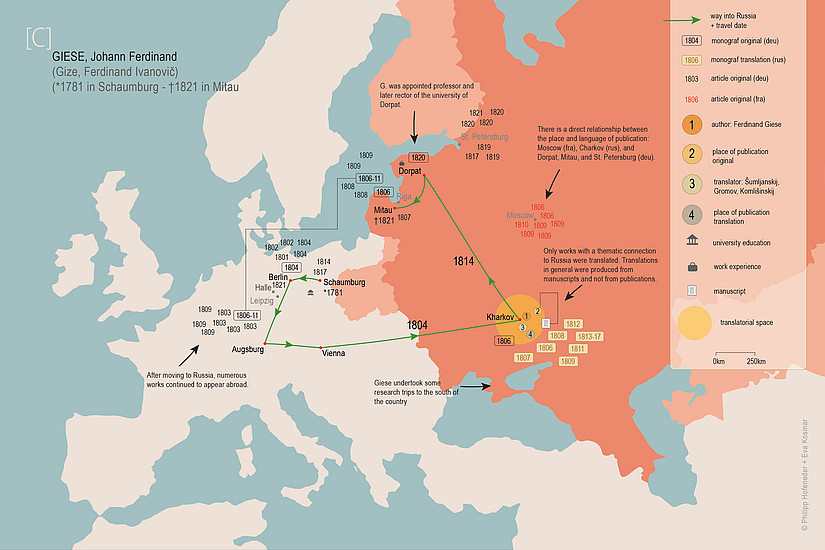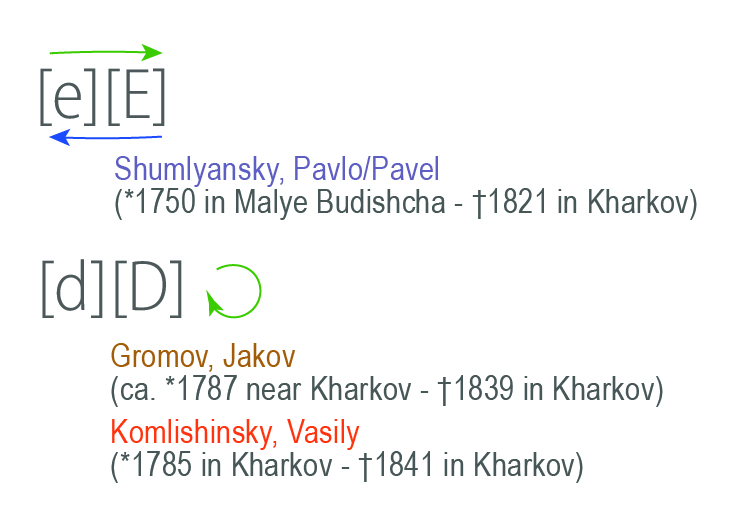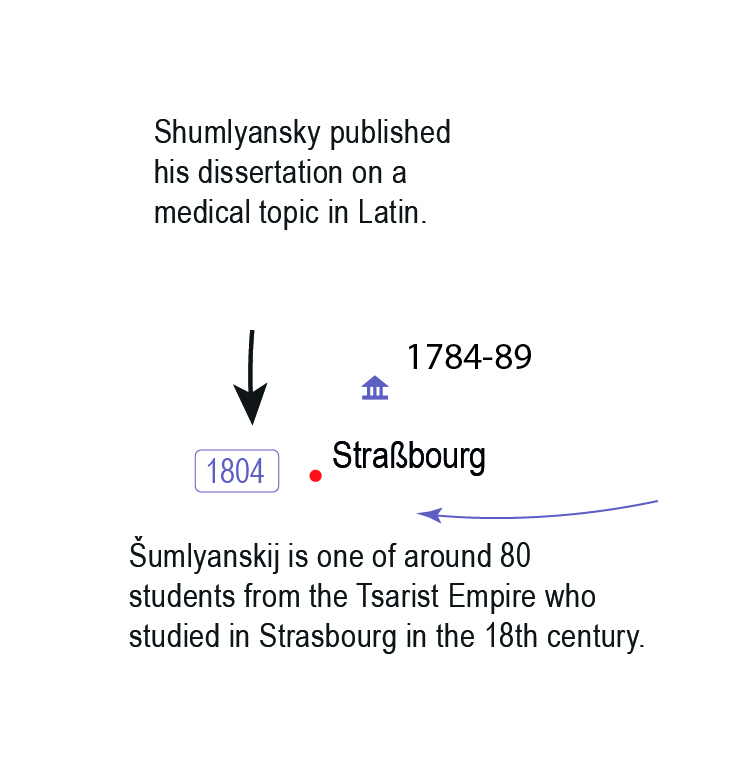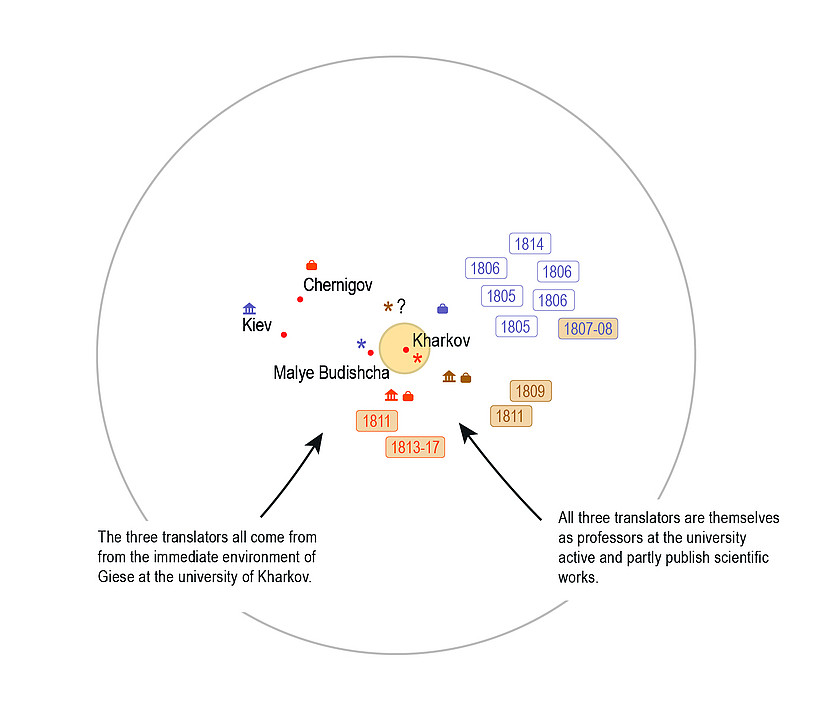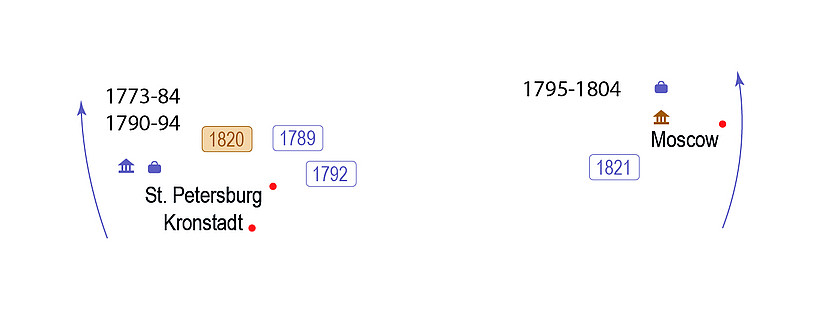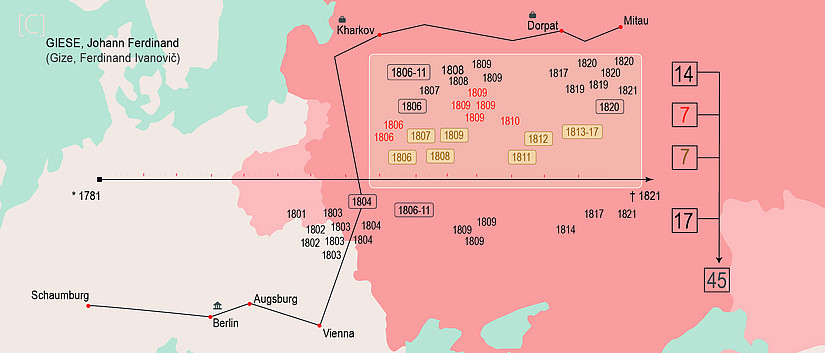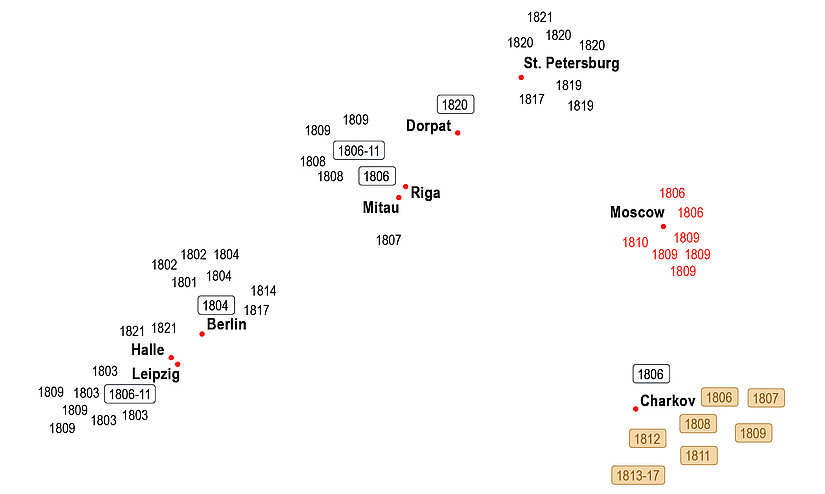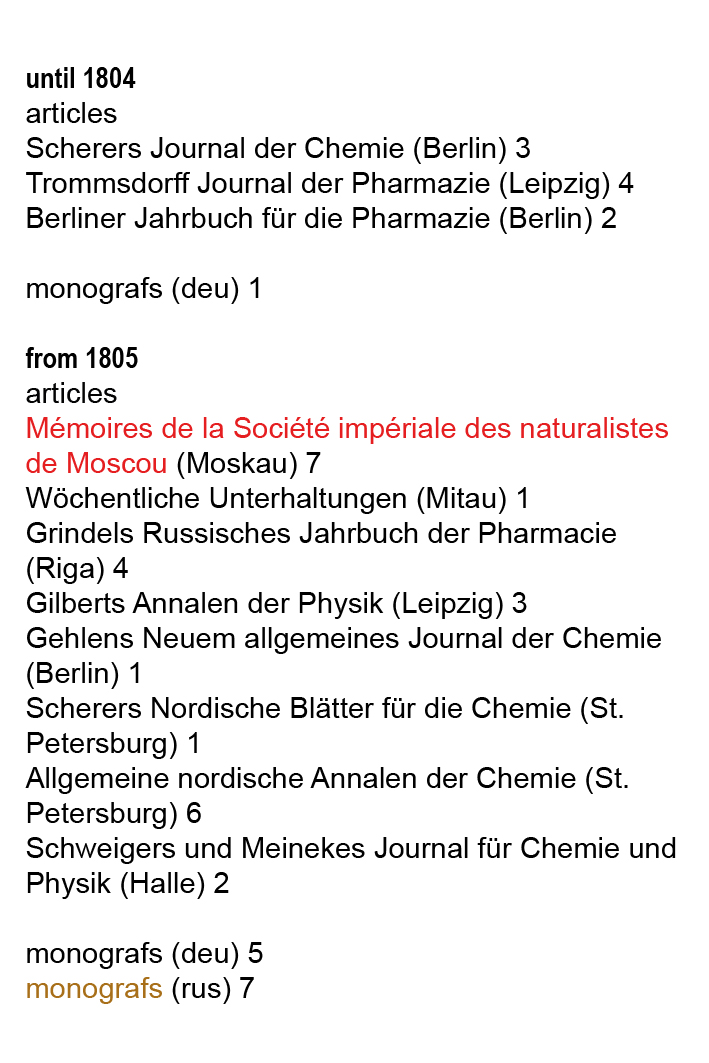fragmented visuals
Data visualizations often represent formats that aim at a self-contained representation. In a sense, they follow the scheme of treating one aspect in one visualization. One way to treat the complex political, social, and cultural contexts in the humanities on a visual level is to link individual visualization fragments together.
A thematic map serves as a starting and orientation point (or as a summarizing end point). It contains all essential aspects and allows a general overview. All subsequent visualizations refer to individual aspects of this thematic map and allow a detailed view.
The present visualization fragments pursue the question of how scientific knowledge was disseminated in the 19th century and which persons (and objects) were involved in this and in which places. Johann Ferdinand Giese (1781-1821) emigrated to the Czarist Empire at a young age and spent the rest of his life there. His scientific publications include works in German, French and Russian and cover numerous places both inside and outside the Tsarist Empire. The transfer of knowledge involved a number of translators (Shumlyansky, Gromov, Komlishinsky), who in turn were mobile. The visualizations show how strongly knowledge was bound to spatial conditions and how certain languages were only used in certain places.
